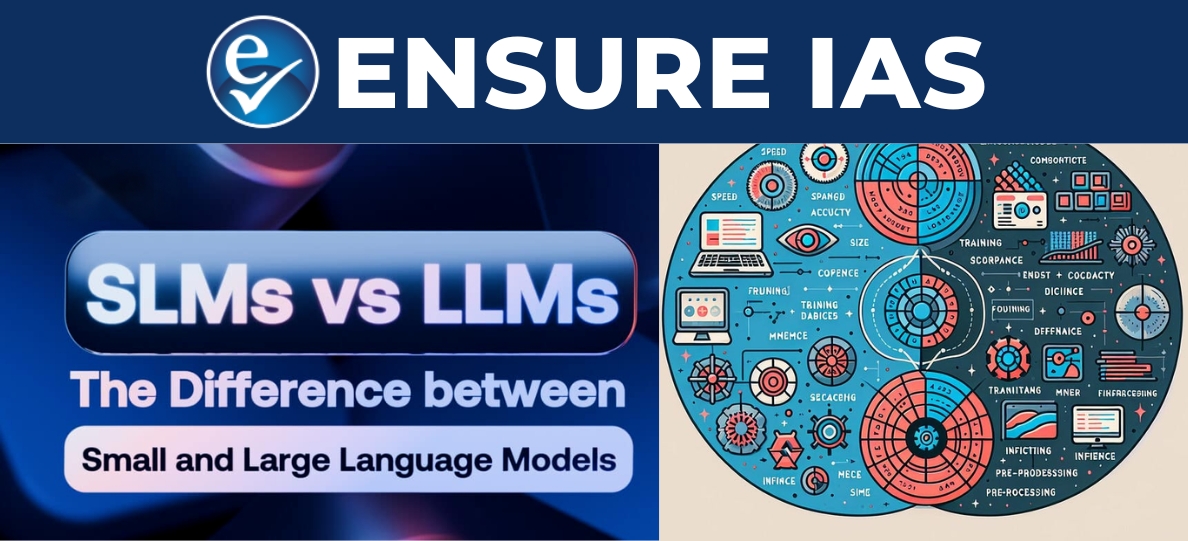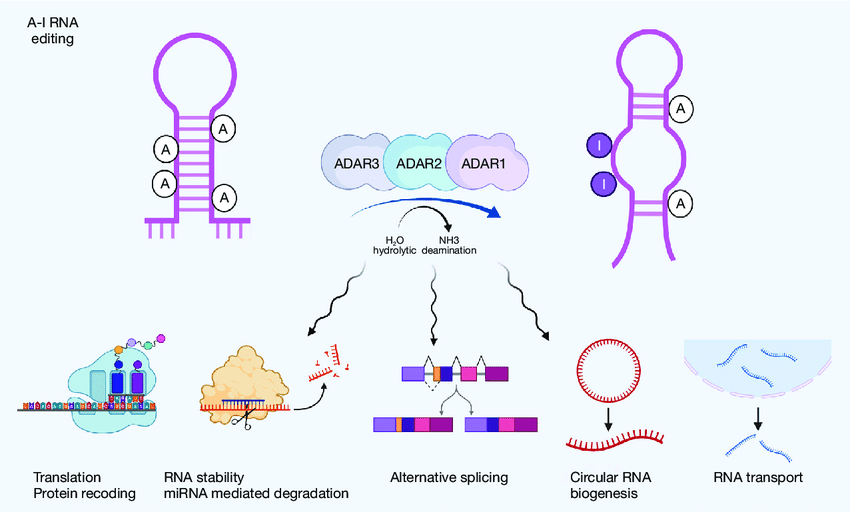- Courses
- GS Full Course 1 Year
- GS Full Course 2 Year
- GS Full Course 3 Year
- GS Full Course Till Selection
- Online Program
- GS Recorded Course
- NCERT (Recorded 500+ Hours)
- Polity Recorded Course
- Geography Recorded Course
- Economy Recorded Course
- AMAC Recorded Course
- Modern India, Post Independence & World History
- Environment Recoded Course
- Governance Recoded Course
- Science & Tech. Recoded Course
- International Relations and Internal Security Recorded Course
- Disaster Management Module Course
- Ethics Recoded Course
- Essay Recoded Course
- Current Affairs Recoded Course
- CSAT
- 5 LAYERED ARJUNA Mentorship
- Public Administration Optional
- ABOUT US
- OUR TOPPERS
- TEST SERIES
- FREE STUDY MATERIAL
- VIDEOS
- CONTACT US
What are Small Language Models and are they better than LLMs?
What are Small Language Models and are they better than LLMs?

- In 2024, a growing trend in the AI field is the shift from Large Language Models (LLMs) to Small Language Models (SLMs).
- While LLMs have been the dominant force in AI, research and development in Small Language Models (SLMs) are gaining momentum.
- This shift is largely driven by diminishing returns in scaling up models and a need for more efficient, cost-effective AI.
What are Large Language Models (LLMs)?
LLMs are AI models trained on massive datasets to understand and generate human-like text. They are versatile, capable of handling a wide range of tasks such as:
- Text generation: Writing essays, stories, etc.
- Translation: Converting text between languages.
- Reasoning and problem-solving: Answering complex questions, providing logical solutions.
Key Features of LLMs:
- Size: They typically have billions to trillions of parameters. For example, GPT-3 has 175 billion parameters, and GPT-4 has 1.7 trillion parameters.
- Training Data: LLMs require large-scale datasets, including text scraped from the internet, books, and articles.
- Examples: OpenAI’s GPT-3 and GPT-4, Google’s Gemini Ultra.
What are Small Language Models (SLMs)?
SLMs are smaller AI models optimized for specific tasks. They are trained with smaller datasets and fewer parameters, making them more efficient for targeted applications.
Key Features of SLMs:
- Size: SLMs have fewer parameters, typically a few billion. For example, Meta's Llama 3 has fewer parameters compared to GPT models.
- Specialization: SLMs excel at specific applications like translation, basic customer service, and voice assistants.
- Data Efficiency: They can perform well with less data, making them suitable for resource-limited environments.
- Examples: Google DeepMind: Released models like Gemini Ultra, Nano, and Flash.
- OpenAI: Introduced GPT-4o mini.
- Meta: Launched Llama 3 models.
- Anthropic AI: Released Claude 3 and Haiku.
- Microsoft: Developed the Phi family of small models.
Key Differences Between SLMs and LLMs
|
Feature |
Large Language Models (LLMs) |
Small Language Models (SLMs) |
|
Size |
Billions to trillions of parameters (e.g., GPT-3 has 175B) |
Few billion parameters, e.g., Meta's Llama 3 (8B) |
|
Versatility |
General-purpose, handles many tasks |
Specialized, focused on specific applications |
|
Training Data |
Requires large datasets from the internet and beyond |
Can work with smaller, more specialized datasets |
|
Computational Power |
Requires significant computational resources |
Less computationally intensive, more efficient |
|
Use Cases |
Broad applications like creative writing, coding, research |
Niche tasks like translation, customer support |
Advantages of Small Language Models (SLMs)
1. Cost-Effectiveness:
- Training & Deployment: SLMs are less expensive to train and deploy due to their smaller size and data requirements.
- Resource Efficiency: They require less computational power, making them more affordable, especially for companies with limited resources.
2. Specialization:
- Focused Applications: SLMs are ideal for tasks like translation, text summarization, and voice recognition, where generalization isn’t required.
- Examples: Meta’s Llama 8B is well-suited for language translation and basic text generation but doesn’t perform as well in tasks like coding or solving logical problems.
3. On-Device AI:
- Edge Computing: Small models can be deployed on smart devices like smartphones and tablets, allowing for AI to function without relying on the cloud.
- Example: Apple’s on-device AI system in iPhones uses small models for tasks like voice recognition and personal assistants.
4. Faster Deployment:
- Due to their smaller size, SLMs can be deployed much quicker than large models, allowing for faster integration into real-world applications.
Disadvantages of Small Language Models (SLMs)
1. Limited Generalization:
- SLMs are effective at specialized tasks, but they lack the versatility of LLMs.
- Complex tasks like scientific research, advanced reasoning, and creative writing may be beyond the capability of SLMs.
2. Performance Gaps in Complex Tasks:
- SLMs may struggle with tasks that require complex logic, such as solving advanced coding problems or analyzing large datasets.
Use Cases of SLMs and LLMs
Use Cases of LLMs:
-
General Purpose:
- Creative Writing: Writing articles, stories, poems.
- Complex Problem Solving: Answering detailed technical questions, solving logical puzzles.
- AI Research: Assisting in advancing scientific knowledge and developing new technologies.
Use Cases of SLMs:
-
Specialized Tasks:
- Customer Support: Chatbots powered by small models for responding to customer queries.
- Translation Services: Small models like Meta’s Llama 3 for basic language translation tasks.
- Voice Assistants: Siri or Google Assistant that use smaller models for voice recognition.
Impact of SLMs in India
India presents a unique opportunity for the widespread adoption of Small Language Models due to its diverse linguistic landscape and resource constraints. SLMs can provide cost-effective, efficient, and localized AI solutions in multiple sectors:
Key Applications in India:
- Agriculture: AI-powered advisory systems for farmers in regional languages.
- Healthcare: Diagnostic tools and health advisory systems that use small models to understand and respond in local languages.
- Education: Personalized learning solutions for rural students, tailored to local languages and needs.
Example Projects in India:
- Visvam by IIIT Hyderabad: Developing small models for healthcare, agriculture, and education.
- Sarvam AI: Aims to create affordable, localized AI solutions for the Indian population.
Conclusion:
The debate between Large Language Models (LLMs) and Small Language Models (SLMs) underscores the growing need for efficiency and specialization in AI. While LLMs continue to be powerful tools for general-purpose tasks and advanced problem-solving, SLMs offer a more cost-effective, resource-efficient, and targeted approach for specific applications. For countries like India, where resources are limited but AI adoption is vital, SLMs provide a unique opportunity to bring AI-driven innovation to sectors such as agriculture, healthcare, and education in a sustainable, scalable manner.
|
Also Read |
|
| FREE NIOS Books | |




